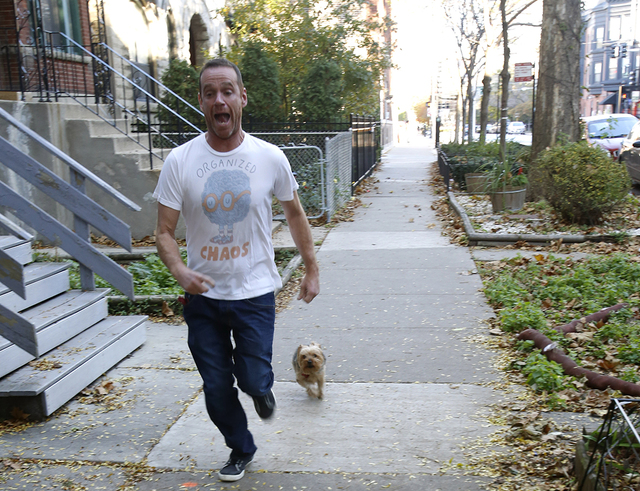CHICAGO — Rob Garofalo was devastated. He’d built his medical and research career on helping young AIDS patients. Then he learned that he, too, was HIV-positive. The news came after he’d already survived kidney cancer and a breakup with his
CHICAGO — Rob Garofalo was devastated. He’d built his medical and research career on helping young AIDS patients. Then he learned that he, too, was HIV-positive. The news came after he’d already survived kidney cancer and a breakup with his longtime partner.
Try as he might, the doctor could not heal himself, at least not emotionally.
“I couldn’t afford myself the same compassion that I’d spent a career teaching other people to have,” says Garofalo, who heads the adolescent medicine division at Lurie Children’s Hospital of Chicago. At first, he told almost no one about his HIV status — not even his own elderly mother, who sensed that her son was struggling mightily during a Christmas visit in 2010.
“You can tell me that everything is OK, but it’s not,” she said, cupping her hands around her son’s face at the end of his trip to his native New Jersey.
Garofalo recalls crying on much of the flight home to Chicago in a catharsis that led him to an unexpected decision, one that helped him in ways no human could and ultimately led him to a new role in the HIV community.
He got a dog.
It was a little Yorkshire terrier he named Fred. And everything changed.
“I had this little bundle of, like, pure joy,” Garofalo says. “He made me re-engage with the world.”
The doctor, who’s helped save many an AIDS patient, knows it sounds a little crazy that the companionship and simple needs of a pet could help him cope with his disease and pull him out of depression.
“But I’m not exaggerating when I say that he saved my life,” says Garofalo, who’d considered suicide after his HIV diagnosis.
His journey back to life started with simple things. He had to leave the apartment where he’d isolated himself to buy food for Fred. He had to talk to the many people who wanted to stop and pet the little dog. Garofalo also found comfort when he’d awaken with one of his frequent night terrors and have Fred to snuggle.
Eventually, Garofalo sought counseling and told his mother and friends about his HIV status. As his energy level grew, he also started a charity using Fred’s image to raise money for programs that help HIV-positive teens.
He continued to share his story, even with strangers on Fred’s charity website. And Garofalo began to realize that he was far from the only person with HIV — or any number of other diseases — who’d been helped by a dog. And in that human-canine bond, he saw new purpose and an opportunity to grow his charity’s reach.
He began a project called “When Dogs Heal,” with the help of a dog photographer named Jesse Freidin and a Chicago-based writer named Zach Stafford. It tells the stories of HIV-positive people and their dogs in an exhibit launching in Chicago on Tuesday, Dec. 1, which is World AIDS Day, and also in New York City two days later.
Participants whose images are in the show include a young mother from Los Angeles who was born with HIV, a Chicago man who tested positive after he was gang raped, and an HIV-positive man in San Francisco who quit dealing drugs so he could provide a more stable life for himself and his newly adopted dog.
“I would be in bed and not want to get up, but this little doggy was whining, licking my neck and needed to get outside. I had to get up,” says Lynnea Garbutt, the young mom. She says her wirehaired fox terrier, Coconut, eventually helped her muster the courage to leave an abusive relationship and also prepared her to care for her daughter, who recently turned 1. The child is not HIV-positive thanks to medical interventions that can now prevent the spread of the virus from mother to infant.
Though many participants’ stories have difficult elements, Freidin, the photographer, said the exhibit also shows “something joyful.”
Daniel Cardenas, an HIV-positive Chicagoan who’ll appear in the upcoming exhibit with his dog, Loki, certainly sees that in his dog.
“He’s really a symbol for me,” Cardenas says, “a symbol of hope, of promise, of a future.”



